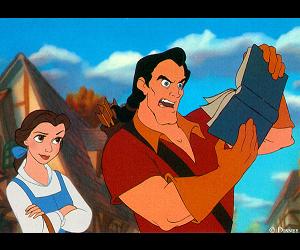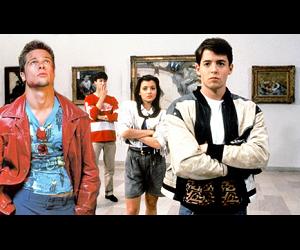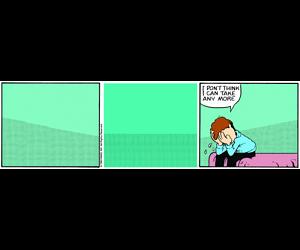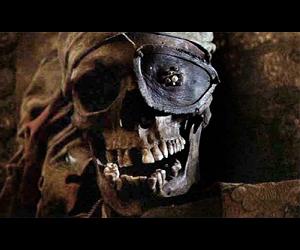8 Twisted Ways to Reinterpret Pop Culture Favorites
Thanks to the Internet and Sigmund Freud, it seems we as a species are no longer capable of enjoying a work of art without coming up with ways to make these things truly disturbing. Having scoured the Internet (and in some cases, my own troubled imagination), here are eight examples of favorite bits of modern pop culture that have been twisted into something else altogether. Be warned, though, some of these could permanently alter your perception of something you may cherish, and you should therefore only proceed with a stout heart and a stable psyche.
Beauty and the Beast is about Stockholm Syndrome
 | | Am I the only one who feels sorry for Gaston? |
This one is fairly simple and self-explanatory, but let's dissect it anyway. The idea is that Beauty and the Beast is actually a story about Stockholm Syndrome, the psychological phenomenon where a hostage starts to empathize with his or her captor. This empathy leads to attraction, even sexual attraction, and becomes nearly impossible to break. Stockholm Syndrome was named for a bank robbery, but is also recognized today in psychologically abusive relationships, cults, tyrranical governments, prison inmates, abused children, and more.
In short, Beauty (or "Belle" in some adaptations) only falls in love with the Beast because she is a slave to him. He doesn't abuse her physically, and so she begins to tell herself that he is a good person. Though he could easily kill her, he doesn't, and so she starts to think he is a humanitarian. Eventually, deprived of any outside perspective, she starts to see the world through the Beast's eyes. Then, once the Beast shows even the smallest ounce of kindness, he becomes a god to her and she falls so in love with him that she will do anything for his sake. At this point, the Beast could do just about anything to her, no matter how detestible or violent, and she would endure it with love.
While many wax poetic about what a wonderful love story this is, Beauty and the Beast only describes the type of love story you see play out on episodes of Cops. Really, how is it romantic that a woman is forced into servitude by an ugly and brutish man and slowly falls in love with him for no rational reason whatsoever? That's not love; it's the makings of a battered wife.
Ferris Bueller is Tyler Durden
 | | I am Jack's rendition of "Danke Shoen" |
This one has been going around the Internet for a few years now. Be warned, there are spoilers for both Ferris Bueller's Day Off and Fight Club ahead, though I show little remorse in spoiling these movies for those damn fools who haven't seen them yet.
The idea is that Ferris Bueller's Day Off is similar to the movie Fight Club, if you look at the movie from Cameron's point of view. Ferris is an unrestrained and unaccountable soul, free in all the ways that Cameron is not. Cameron is depressed, sickly, lonely, and desperately in love with a woman he can never have (Ferris' girlfriend, Sloane). In this state, he invents Ferris Bueller from whole cloth.
Many versions of the theory contend that most of the movie happens with Cameron asleep in bed, only waking after he sleepwalks into his father's garage and destroys the car, forcing himself to deal with all of his deep-seated emotional issues with his father. Once he does this, Ferris leaves him to live happily ever after, as does the potentially imaginary version of Sloane. Other theories suggest that Cameron really did take his father's car on a trip around Chicago, all the while conversing with his imaginary friends and having extremely detailed hallucinations.
Garfield is Jon Arbuckle's Coping Mechanism
 | | It's a lonely, lonely, lonely life |
In a very similar vein, what if Garfield weren't real either? I mean, what if he's even less real? A few years back, a man named Dan Walsh created a web-comic that simply erased the lasagna-loving cat (and Odie, too) from Jon Arbuckle's life. The result is surprisingly depressing, as it portrays the life of a cartoonist (yes, Jon Arbuckle is a cartoonist) who is perpetually lonely and awkward.
Without Garfield, Jon has nothing, and so it stands to reason that perhaps Garfield is a creation of the cartoonist's mind to help him cope with the existential nightmare that is his reality. After all, how many cats out there eat lasagna and make half-witty wisecracks every five seconds?
You can take it to a whole new level, too, by suggesting that Jim Davis is chronicling his own battle with delusions and depression. Indeed, Davis has embraced and supported the "Garfield Minus Garfield" web-comic, and he shares some eerie similarities with his creation. Like Davis, Jon Arbuckle was raised on a farm with a brother. They also share the same birthday and, of course, are both cartoonists. According to Wikipedia, Jim Davis has a wife and children, but you can't prove they aren't figments of his chronically depressed imagination, can you? Can you?!
The Goonies is about Child Abuse
 | | Pictured: incest |
This is the first one on this list that occurred to me, probably because I was taking both film and psychology courses at the time. I don't feel like it's one that has to be elaborated on--you have a kid on an adventure to find the treasure of "One-Eyed Willy," a pirate his father used to tell him about late at night--but I'll get into all the grossly uncomfortable details nonetheless.
The main character, Mikey, is suffering from severe sexual abuse at the hands of his father and, as a result, his psyche has started to split. Mikey passionately undertakes a quest to prove the story of One-Eyed Willy so that he doesn't have to face the actual reality, that One-Eyed Willy is, well, a part of his father. The whole thing about their neighborhood going under is all true, too, so there's the additional motivation that Mikey wants to prove that he is a man in the estimation of his father, mostly just so that he'll stop getting raped every night. Many of the other characters in the story are pieces of Mikey's tormented identity: his older brother is actually the normal, confident boy he wishes he could be; "Mouth" is the free spirit who can deal with any bad situation (don't read too much into the nickname, please); Data is his inner geek who can rationalize away anything; "Sloth" is the ugliness Mikey feels inside; the Fratellis are his inner demons vying for control; etc.
In the end, which is surprisingly bleek, Mikey faces his problems and decides that the only way out is to embrace the fantasy. Thus, One-Eyed Willy sails off into the sunset, the Fratellis receive their comeupance, Sloth becomes a friend to all, and they have enough money to save the neighborhood. Therefore, the next time his father tells him the story of One-Eyed Willy, Mikey can drift off into his newly created reality and drown out the terrible, terrible pain.
-e. magill 7/27/2010
|
|